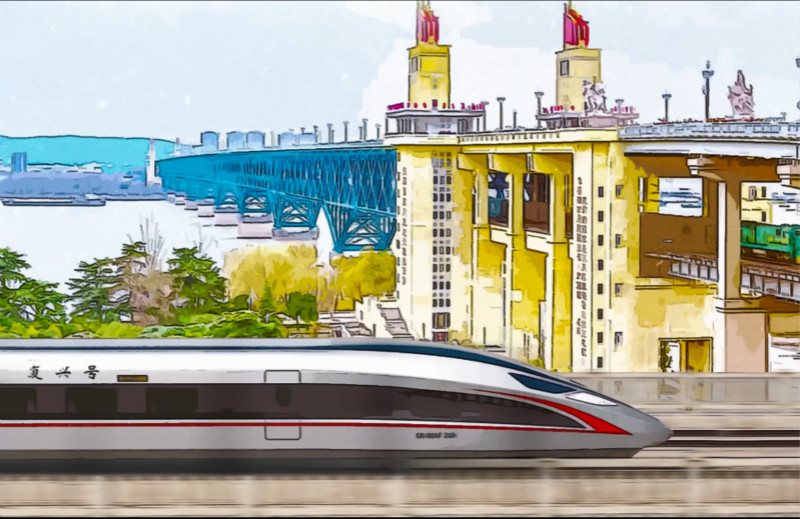

Over the past 70 years since the founding of the People’s Republic of China, the Chinese people have given rise to numerous engineering marvels.
From lagging behind other countries in transportation facilities to having the world’s longest high-speed railway mileage and expressway mileage, China’s road construction has achieved leapfrog development.
From designing and building the first super-large bridge—the Nanjing Yangtze River Bridge—to constructing the world’s longest cross-sea bridge—the Hong Kong-Zhuhai-Macao Bridge—China’s bridge construction has become a name card of the country.
From launching spacecraft to lunar exploration, from deep-sea manned submersibles to homemade aircraft carriers, China has turned ambition into reality.
How can China complete so many super engineering projects in only a few decades?
The achievements are inseparable from the leadership of the Communist Party of China and the advantages of its socialist system.
To build the Nanjing Yangtze River Bridge in the 1960s, the country spent 287 million yuan, while the gross output value of industry and agriculture in China back then was only 140 billion yuan.
Almost all of the country’s bridge experts were called together to design the bridge and over 7,000 builders were employed to construct the bridge from both the northern and southern banks of the Yangtze River.
It took eight years to finish the bridge and it opened a new chapter for China’s construction of megaprojects.

The reason the country is able to undertake and finish major engineering projects is that it is able to concentrate all national efforts on big issues.
The South-to-North Water Diversion Project, the largest of this kind in the world, is another example of how China effectively executes plans with concerted efforts.
To guarantee that the project could proceed smoothly, about 380,000 people were relocated and 500,000 residents were re-employed, as the project passes through 100 counties in seven provinces and cities.
Party organizations and governments at all levels mobilized local officials to talk with all impacted residents to make sure they would be willing to relocate.
The resettlement was completed within two years, a miracle in the relocation of inhabitants in the world. Such efficiency is a valuable asset.
What is special about megaprojects? It is not only just about the size, but also about the technological innovation.
China has seven of the world’s top 10 ports in terms of handling capacity. The Yangshan Deep-Water Port in Shanghai is one of them. Its Phase IV container terminal is the largest automated container terminal in the world.
The core technology of the automated port was developed by China.
Driven by innovation and craftsmanship, China gives full play to its institutional strengths as an economic and tech powerhouse, making these megaprojects possible.

 Award-winning photos show poverty reduction achievements in NE China's Jilin province
Award-winning photos show poverty reduction achievements in NE China's Jilin province People dance to greet advent of New Year in Ameiqituo Town, Guizhou
People dance to greet advent of New Year in Ameiqituo Town, Guizhou Fire brigade in Shanghai holds group wedding
Fire brigade in Shanghai holds group wedding Tourists enjoy ice sculptures in Datan Town, north China
Tourists enjoy ice sculptures in Datan Town, north China Sunset scenery of Dayan Pagoda in Xi'an
Sunset scenery of Dayan Pagoda in Xi'an Tourists have fun at scenic spot in Nanlong Town, NW China
Tourists have fun at scenic spot in Nanlong Town, NW China Harbin attracts tourists by making best use of ice in winter
Harbin attracts tourists by making best use of ice in winter In pics: FIS Alpine Ski Women's World Cup Slalom
In pics: FIS Alpine Ski Women's World Cup Slalom Black-necked cranes rest at reservoir in Lhunzhub County, Lhasa
Black-necked cranes rest at reservoir in Lhunzhub County, Lhasa China's FAST telescope will be available to foreign scientists in April
China's FAST telescope will be available to foreign scientists in April